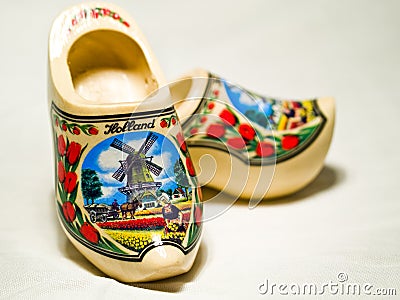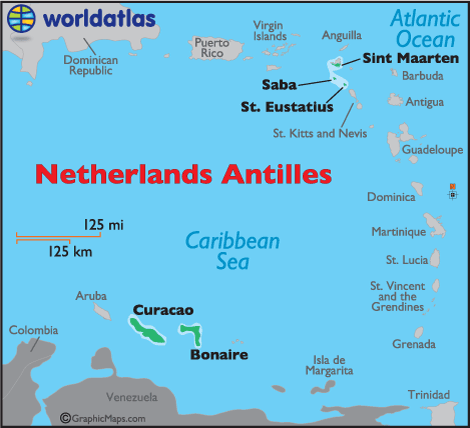I’ve had a thing
for the Netherlands for a while now. I know two people who have spent time
there, one for several years. From listening to them talk about the
Netherlands, I grew an interest in the country. And thanks to Duolingo, I began
studying a little bit of Dutch. However, I was also doing the German track at
the same time, and I don’t recommend doing that because they’re too similar.
(It’s the same reason why I had to stop doing Portuguese and Spanish at the
same time.)
The Dutch name for
the Netherlands is Nederlands, literally meaning “the lower country.” (Nederlands is also the name for their language, Dutch.) It’s
called this because about half the country is less than 1m above sea level. The
country is also widely known as Holland, which is sort of a misnomer since
Holland only refers to two states (North Holland and South Holland). However,
there are a number of people who refer to the entire country as Holland. (For
example, the Japanese word for the country, Oranda, is based on the word for
Holland.)
The Netherlands is
located in the northwest corner of mainland Europe. It’s surrounded by Belgium
to its south and Germany to its east, and the western coast borders the
northern end of the English Channel. The country experiences warm summers and
cool winters (I'm already sold).
Evidence shows that
the Neanderthals were most likely the first people in this area. Other groups
have migrated through this area over time, and archeologists have uncovered
many of their items, including the world’s oldest boat (a canoe dubbed the
Pesse Canoe). Smiths began smelting the iron ore from the bogs and started
creating swords, knives, and other tools and weapons. The Romans took over the
lands for the first couple of centuries AD, and the Franks took control when
the Romans were defeated. The Franks also had to share this area with the
Frisian Kingdom. The 10th and 11th centuries were
dominated by the Holy Roman Empire. At this time, the Netherlands was nothing
more than a collection of small city-state kingdoms, and advancements in
agriculture helped develop communities and society at a quicker pace than in
the past. They couldn’t get too comfortable, though: things changed as they
fell under Habsburg rule during the Middle Ages. Holland began having trouble
growing grain and startd figuring out how to effectively drain the wetlands. Finally,
they gained their independence and many of the states formed a united confederation.
During the 17th century, the Dutch Empire began expanding to the US,
the Caribbean and South America, Africa, and Southeast Asia. Between the Dutch
East India Company and Dutch West India Company, they set up trading posts all
over the world. Under the Batavian Republic, they fought as an extension of the
French army under Napoleon Bonaparte until he was defeated. Although the
Netherlands managed to remain neutral during WWI, they were invaded by Nazi
Germany in WWII. In 1954, the Kingdom of the Netherlands reorganized itself,
releasing several of its colonies and reclassified others. They were one of the
founding members of NATO, Benelux, the EU, and a number of other organizations.
The 1960s and 1970s were a time of quite a few social and cultural changes in
the Netherlands. That momentum led to Netherlands being the first country to
legalize same-sex marriage in 2001. (The US wouldn’t achieve this for another
14 years.)
Although Amsterdam
is the largest city in the Kingdom of the Netherlands and is considered the
capital, unlike most capitals, it’s not where the center of government is
located. For the Netherlands, that would be in The Hague. Amsterdam was named
after the dam on the Amstel River (yes, the same river Amstel beer is named
after). The city is widely known for its red-light district and weed cafés as
well as its picturesque bridges over the canals and waterways. Anyone who’s
ever read The Diary of Anne Frank knows Amsterdam, and anyone who’s ever taken an
art class in school should know who its two famous resident painters are:
Rembrandt van Rijn and Vincent van Gogh. Today, the city is a global alpha
city, often topping the Best Cities lists in a number of categories.
The Netherlands has
a developed economy, and many of the top global companies are headquartered
here; they’re all names most of us are familiar with: Philips, KLM, ING,
TomTom, Unilever, Randstad, Heineken, and Royal Dutch Shell (known as Shell Oil
Company in the US). The Amsterdam Stock Exchange is the oldest one in the world.
In the 1950s, huge reserves of natural gas were discovered, which really helped
the Dutch economy. They’re so big that they equal about a quarter of all the
reserves in the EU. While the Netherlands in Europe uses the euro as its
currency, the islands of the Caribbean Netherlands use the US Dollar instead.
Since about the
time of the Reformation, the Netherlands has traditionally been a Protestant
country: about two-thirds Protestant and one-third Roman Catholic. But by the
time the 20th century rolled around, things started to change.
Today, roughly about two-thirds of the people claim no affiliation with any
particular organized religion. It’s one of the world’s most secular countries
(sounds like my kind of place). There are certainly smaller numbers of
Catholic, Protestant, and other Christian denominations still present, and
there are also sizable Muslim, Hindu, and Buddhist populations as well.
The official and
most widely spoken language is Dutch. To me, Dutch is like a cross between
English and German. West Frisian holds an official status in the province of
Friesland. The European Netherlands also declared two regional languages: Low
Saxon and Limburgish. When it comes to the Caribbean Netherlands, English has
an official status on Saba and Sint Eustatius, and Papiamento has an official
status on Bonaire. About 90% of Dutch can carry on a conversation in English
since it’s required in secondary schools. German and French are the second and
third most popular foreign languages studied.
 |
| Oh my gosh, these are so kitchy. |
When I was a kid,
the stereotypical images of the Netherlands used to fill my head: wooden shoes,
windmills, tulip fields, and what I read in Hans
Brinker, or The Silver Skates by Mary Mapes Dodge, including the story of
the boy who plugged the dam with his finger. As I entered college, the famous
cafés of Amsterdam piqued my interest in the country more. And as an adult, the
fact that the Netherlands has a more efficient healthcare system than the US,
more affordable college, and a secular view draw me in more. I’ve already
learned so much about this small country that does big things. But I think
there’s more to learn out there.
Up next: art and
literature








No comments:
Post a Comment